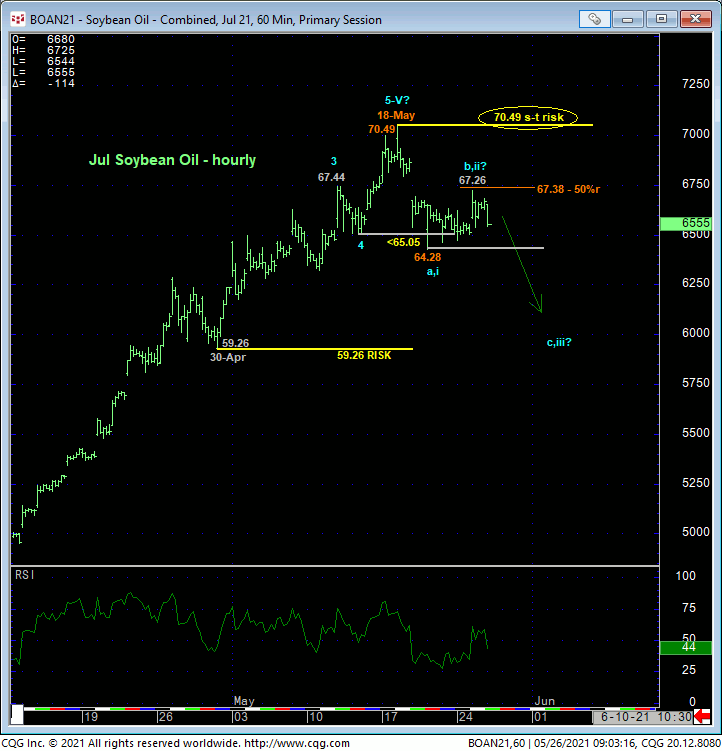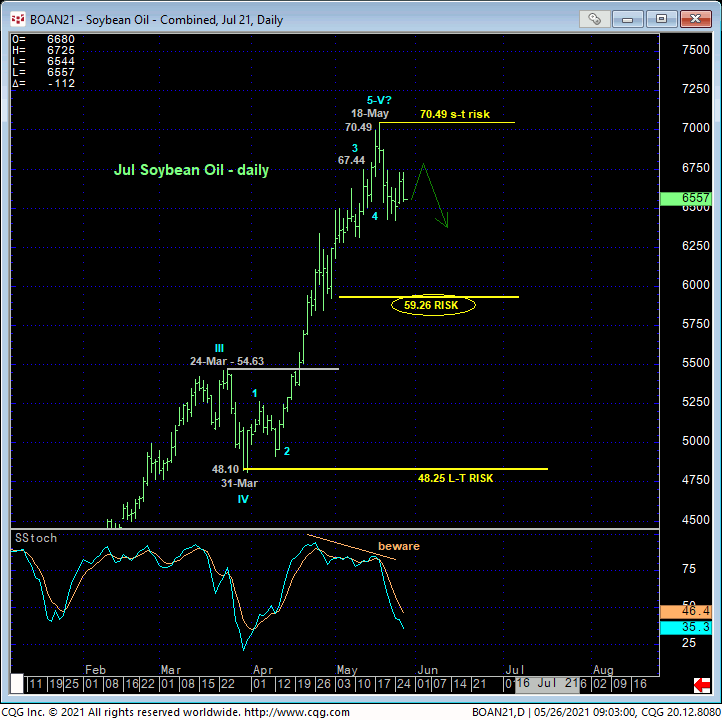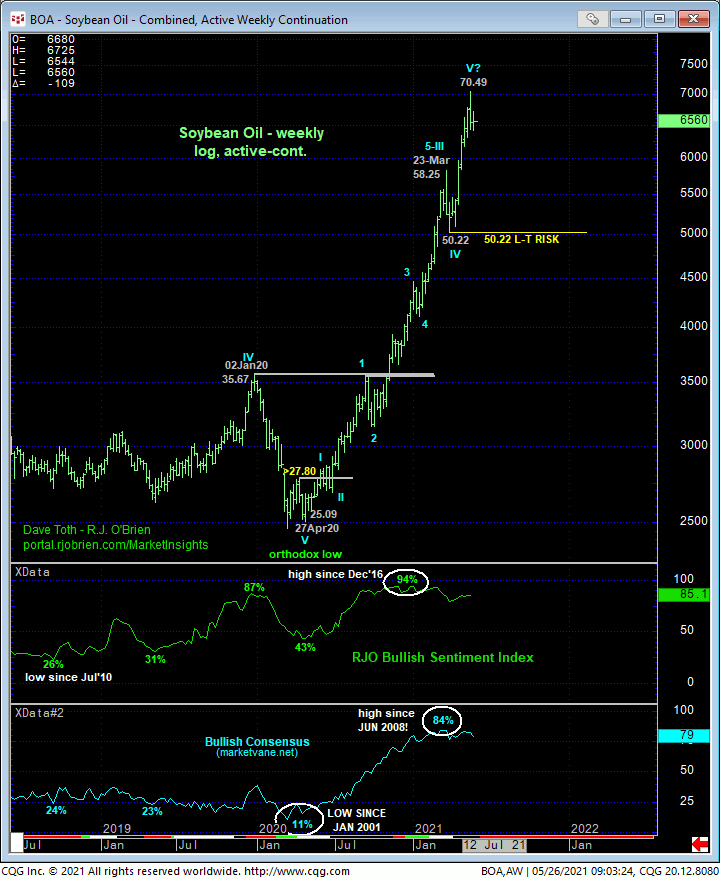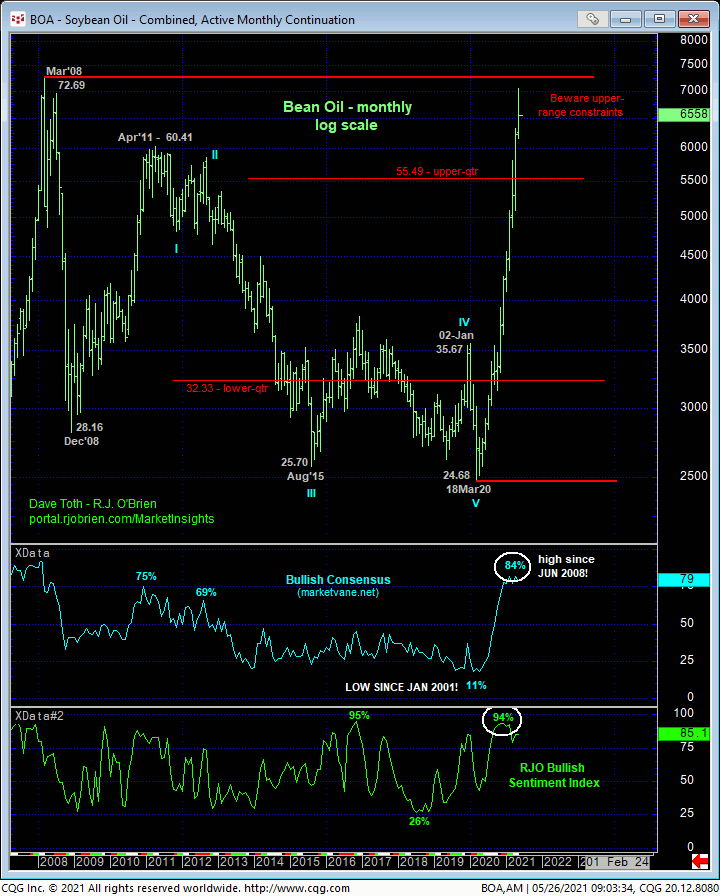
Against a backdrop where all other markets across the grain complex have initiated larger-degree correction or reversal threats, traders are advised to move to a new bearish policy and exposure in Jul beans on a break below 20-May’s 64.28 low. After last week’s bearish divergence in short-term momentum below 13-May’s 65.05 corrective low discussed in 20-May’s Technical Blog, resumed weakness below last week’s 64.28 low would render that low an initial counter-trend low and confirm at least the intermediate-term trend as down. On a smaller scale, this would also satisfy our three reversal requirements down from 18-May’s 70.49 high:
- a confirmed bearish divergence in momentum
- proof of trendy, impulsive price action on that initial counter-trend sell-off attempt and, most importantly
- proof of labored, corrective 3-wave behavior on the subsequent recovery attempt.
A sub-64.28 failure will have the tremendous benefit of then identifying TWO highs above the market- 18-may’s 70.49 high and yesterday’s 67.26 high- as specific risk parameters from which non-bullish decisions like long-covers and new bearish punts can be objectively based and managed.


On a longer-term basis, a failure below 64,28 would reinforce a wave count calling 18-May’s 70.49 high the END of a 5-wave Elliott sequence up from 30-Mar’s 48.25 Globex day-session low. Given the magnitude of the secular bull trend shown in the weekly log chart below, obviously, such sub-64.28 weakness would be of a grossly insufficient SCALE to conclude a major peak. But given historically frothy bullish sentiment/contrary opinion levels not seen since at least 2016 and, in the case of the Bullish Consensus (marketvane.net), since 2008, the extent to which this market might be vulnerable to steep losses should not be underestimated. In effect, we’re suggesting opting for whipsaw risk, back above the 70.49 high, for deeper nominal risk below 30-Apr’s 59.26 next larger-degree corrective low and certainly 31-Nar’s 50.22 low on a weekly active-continuation basis the market needs to break to, in fact, break the secular bull trend.

Another factor complicit in a peak/reversal threat that could be major in scope is the market’s recent proximity to historical heights not seen since 2008. Indeed, for a bullish policy to remain preferred “up here”, it’s incumbent on the market to sustain trendy, impulsive behavior higher on every scale. Its failure to do so, even on an admittedly smaller-degree scale, cannot be ignored as an initial threat to the bull that could easily evolve into a massive peak and reversal.
These issues considered, a bullish policy and exposure remain OK for both short- and longer-term traders, with a failure below 64.28 required to not only neutralize bullish exposure, but also reverse into a new bearish policy and exposure with a subsequent recovery above 70.49 to negate this call and warrant its cover.


